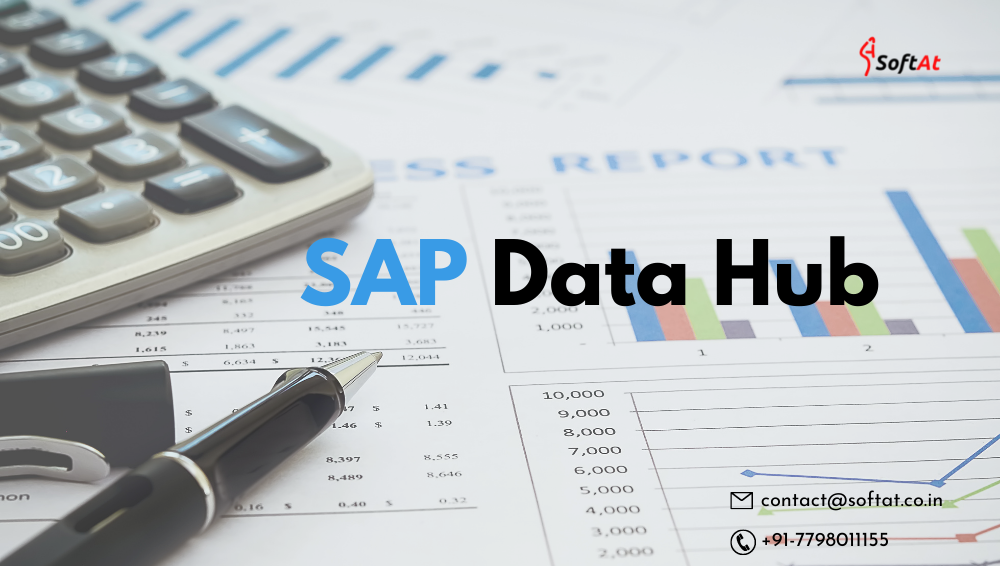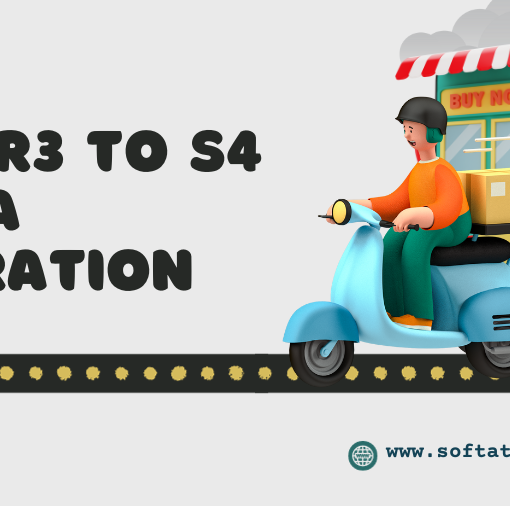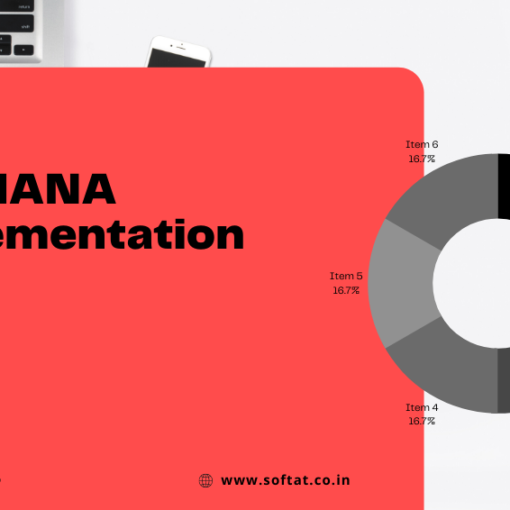What is SAP Data Hub?
SAP Data Hub is a platform for combining data streams from many sources. There is often talk of constructing a data pipeline based on the unrestricted flow of data in this context. Possible data sources include ERP systems, warehouses, and big data lakes (ample storage with unformatted data).
SAP Data Hub, as the core administration level for data landscapes, treats all data equally, regardless of its source. The software can combine and organize data before transferring it to other applications like analytical tools. Metadata management is also possible with SAP Data Hub.
What is SAP Data Hub mainly used for?
Despite vast data landscapes, it is primarily geared at enterprises who wish to generate a greater level of understanding from their data. According to an SAP study from 2018, this is 86 percent.
The platform’s primary purpose is to provide an intelligent (data-driven) organization of data from ERP and other systems that provides users with accurate data in a correct context at all times.
A few of the important use cases of SAP DH are summarized below:
Orchestration of complex data processes across system boundaries
It can be used to construct processes for the data landscape, including monitoring and analysis activities, as part of the orchestration. The goal is to map and execute what is known as end-to-end data operations. These start with the collection of data from the source (such as a data lake or an ERP system), then move on to data processing and data flow and finally provide or integrate the generated data into applications and business processes.
Data collection and processing
Another important function of the data hub is to handle vast amounts of organized and unstructured data or data flows from data lakes. Data integration, cleansing, enrichment, masking, and anonymization are all supported by pre-built functions.
In addition, function modules for data quality and governance monitoring are accessible. Furthermore, integration of the SAP solutions SAP HANA Smart Data Integration, SAP Data Services, and SAP BW is possible.
Setup, operation, management, and control of complex data landscapes
Data landscapes of companies are very complicated and fragmented. It unifies the disparate elements of comparable landscapes into a single view. This provides complete transparency of data processing across all related components to data managers. Adapters are provided to connect to the appropriate data sources.
The data landscape can be separated into discrete areas, each with its own set of norms and service requirements, if necessary (for example, production and test environment). Functions for access control and data security are also available.
Metadata management
SAP Data Hub Metadata Explorer is the company’s proprietary tool for managing and controlling metadata. This tool is used to capture data qualities such as storage location, quality, and secrecy. This transparency allows you to make educated decisions on issues such as:
- What datasets should be made public?
- Who should be given access to the information?
- The data source’s authenticity (genuineness)
- Regulations regarding data protection are followed.
- Access privileges, as well as data access, changes, origin, and use, are all logged.
As a result, the Metadata Explorer is an essential part of Data Governance. It can, however, be used to generate a data preview, create content indexes, and add keywords to help find records easier.
Data Discovery with SAP Data Hub
Data discovery, or the recognition of patterns in huge amounts of data, is another application of SAP Data Hub. To accomplish so, the data is automatically searched using the tools supplied.
Data elements that have been identified can also be tagged. Relevant data that has been “found” might then be made available for further use (for analyses, for example). Overall, this method aids in the extraction of relevant information from Big Data.
Data Governance with SAP Data Hub
Data Governance refers to a comprehensive approach to data management that aims to ensure data availability, usability, integrity, and security. It also has tools that can be used for this.
SAP Data Hub Pipeline
Data pipelines are a key component of SAP Data Hub, and they can connect data lakes (for example, based on Hadoop), object storage (for example, Amazon S3, which is useful for IoT sensor data), and cloud databases, local databases, and data warehouses.
As a result, the solution covers an organization’s full data landscape and data flows. As a result, developers can create a range of pipeline models that can be used to acquire, harmonize, transform, and process data from a variety of sources. Furthermore, numerous services and processes can be integrated directly into data pipelines.
SAP Data Hub Architecture
From a technical point of view, SAP Data Hub is based on the powerful in-memory database SAP HANA on the one hand, and SAP Vora on the other. This latter is a platform for integrating and managing data from Apache Hadoop – a widely used technology in the big data environment.
While SAP DH integrates and maintains data from a variety of sources, the data is never taken from its original source and stored elsewhere. This method, also known as the push-down model, allows for dispersed data processing on the source system. In comparison to the classic ETL process (Extract, Transform, Load), a higher performance is achieved in the processing and output of results.
The front end can be a simple desktop design variant or a cockpit. Users can construct their own data pipelines using the cockpit (in self-service). It also shows the current connection status of all connected data systems. The underlying data sources are also shown. This ensures that you always have a structured view of the data landscape. Employees can also utilize drag-and-drop functions to develop graphical data, and flow models.
SAP Data Hub vs Data Intelligence
SAP Data Intelligence is one of Walldorf’s most recent cloud offerings. It is built on the SAP Cloud Platform and incorporates all of SAP Data Hub’s features. As a result, the service might be referred to as a cloud-based version of SAP Data Hub or “SAP Data Hub as a Service.”
However, the number of functions available is significantly greater. SAP Data Intelligence, for example, contains the SAP Leonardo Machine Learning Foundation’s functionalities. The Machine Learning Scenario Manager is a key component here. It allows you to centrally organize, supply, and execute multiple machine learning objects (such as models and pipelines).
SAP Data Intelligence is not required for companies that already utilize SAP Data Hub and want to make use of the rich Leonardo features. Instead, the features are now available via SAP Data Hub at no additional cost thanks to a maintenance contract.
Overall, SAP Data Intelligence and SAP Data Hub can be considered interchangeable solutions. The delivery is the only difference: While SAP Data Intelligence is a subscription-based service, SAP Data Hub is a licensed product that may be used in any Kubernetes environment (cloud, on-premise, hybrid).
What is SAP Open Hub?
SAP Open Hub is a data extraction and distribution tool within the SAP Business Warehouse (BW) system. It allows users to extract data from SAP BW and export it to external systems, databases, or flat files in a structured format. The primary purpose of SAP Open Hub is to distribute data from the BW system to other systems for various reporting, analysis, or integration purposes.
Key features and functionalities of SAP Open Hub include:
- Data Extraction: SAP Open Hub enables users to extract data from InfoProviders (such as InfoCubes, DataStore Objects, or InfoObjects) within the SAP BW system.
- Data Transformation: The extracted data can be transformed and prepared according to the requirements of the target system.
- Data Distribution: The transformed data can be distributed to different targets, such as external databases (e.g., Oracle, SQL Server), flat files (e.g., CSV, XML), or other SAP systems.
- Data Partitioning: Open Hub allows data to be split and distributed into multiple partitions, which can be useful for parallel processing and load balancing.
- Data Filtering: Users can apply filters to select specific data subsets for extraction based on criteria like time ranges, values, or other conditions.
- Delta Mechanism: Open Hub supports delta extraction, which means it can extract only the changed or new data since the last extraction. This reduces the load on both the source and target systems during subsequent data transfers.
- Scheduling and Automation: Data extraction and distribution processes can be scheduled and automated, enabling regular and consistent data updates.
- Monitoring and Error Handling: Open Hub provides monitoring capabilities to track the status of data extraction and distribution jobs. It also handles error scenarios and provides options for error handling and reprocessing.
- Security and Authorization: Access to SAP Open Hub functionality is controlled through SAP BW’s security mechanisms, ensuring that only authorized users can perform data extraction and distribution.
SAP Open Hub serves as a data distribution layer that enables organizations to share SAP BW data with non-SAP systems, third-party reporting tools, or other data warehousing solutions. This helps businesses integrate data from various sources and enable cross-system reporting and analytics, making it a valuable component for data integration and sharing in the SAP BW landscape.





